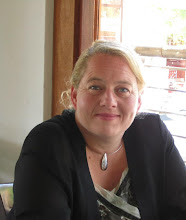I have been reading a book titled "Rockin' the Boat: Mass Music and Mass Movements" edited by Reebee Garofalo. I am researching further into the history of protest music and found two parts of this text worthy of further mention - one being Indigenous Australians and their use of political song and the other being the history of women's music.
1. Indigenous Australians and political song
Writing with respect to the Stolen Generation, Marcus Breen writes about the Indigenous artist Archie Roach:
Roach reinforced the agony of enforced isolation from the black family with 'Took the Children Away', which unequivocally articulated black Australian's pain; while challenging white assumptions about black rights and progress toward equality. 'Took the Children Away' almost reached the Top 40 charts in Australia in late 1990, opening up a new era of involvement within the mainstream music establishment. That Roach himself had experienced this appalling government policy, surviving to sing about it, made the song more poignant still..."[pg 150]
Breen also notes the impact of public radio in ensuring that independent artists could be heard.[pg 158] He notes that in the mid to late 1970s more Indigenous artists were played on radio opening up new audiences and influencing white Australians. Furthermore, in 1983 with the election of the Hawke Labour Government Indigenous issues were transformed from a focus on land rights to a plethora of other areas of activism [pg 159]:
The floodgates were opened and music was the bearer of the news and the means of articulating ideas and issues that needed to find a concentrated form [pg 159]... In the 1980s, the vast and mostly unhappy history of Aboriginal people began to appear in music [pg 160]
Breen goes on to note the part played by two Indigenous bands, Us Mob and No Fixed Address in bring Indigenous issues to a broader audience with both appearing in the film Wrong Side of the Road [pg 161]. The establishment of Indigenous Media by CAAMA (Central Australian Aboriginal Media Association) and the birth of the Indigenous radio station led to the need to record more Indigenous artists [pg 162-164].
2. The History of Women's Music
In documenting the history or women's music and discussing the relationship between women's music of the 1970s and the flow on effects to the new wave of women's music in the 1980s and 1990s with artists such as Tracy Chapman and Michelle Shocked and k.d. lang, Cynthia M. Lont writes:
Women's music was originally defined as music by women, for women, about women, and financially controlled by women. By this definition, a song written by women, about women, and for women would not be considered a part of women's music if it were recorded on a major label. This alternative music industry was originally called lesbian music because many felt the music was started by lesbians for lesbians. Others believed the music was started by heterosexual feminists and taken over by lesbian-feminists when they broke away from the women's liberation movement in the early 1970s. [pg 242]
Women's music grew out of the left counterculture movements with fragments from the students movement and the Civil Rights movement [pg 243]. Lont writes:
The existence of women's music (the lyrics, the music, and its support structure) directly opposed the patriarchal culture in which mainstream popular music existed... The absence of positive women's images within popular music paralleled a lack of opportunities for female performers [pg 243].
Artists such as Lavender Jane were ground breakers in this field [pg 244]. This was furthered by the creation of a women's music record label, Olivia Records [pg 245]. In the late 1970s a distribution network was also established. Called WILD (Women's Independent Labels Distributors) relied heavily on volunteers to distribute new music [pg 246]. This coincided with the beginning of women's music festivals such as The Michigan Womyn's Music Festival in 1976 [pg 246]. By the 1980s the women's music market was saturated with albums [pg 247]. This led to a move towards the mainstream by Olivia Records with others in the field working more closely with other social movements to try to stay afloat financially. WILD started to include non women's music within the distribution network and female artists started to be signed by the major record labels with this now being seen as a positive move to ensure a larger audience were exposed to the messages within the music [pg 249 - 251]. Some of the key elements of the women's music movement were lost:
As one reads about the new breed, one also reads about their managers, men; the musicians with whom they work, men; the distributors of their albums, men. From this perspective little has changed [pg 252].
The second wave of women's music was more heavily dependent on major record labels and lost some of its veracity:
Though mainstream female performers from Tina Turner to Laurie Anderson chipped away at the stale stereotyped male image of the female performer, the mainstream success of Susan Vega's sons "Luka"... created avenues for a new breed of pop women... Tracy Chapman, Phranc, Ferron, Melissa Etheridge and Michelle Shocked, got their first boost from women's msuic audiences. Other performers, like k.d. lang, resemble the lesbian images women's music has always protrayed [pg 249 - 250].
In some cases these artists do not openly acknowledge their sexuality unless they are speaking directly with the gay and lesbian press [pg 250 - 251].
Overall Lont concludes;
It is already obvious that women's music has changed as economics and politics have changed. The movement toward mainstream or other politically left groups seems to broadened women's music. The days of complete separateness from other subculture groups is over.
Further Reading
Ed. Reebee Garofalo, Rockin' the Boat: Mass Music and Mass Movements (1992) < http://www.amazon.com/Rockin-Boat-Mass-Music-Movements/dp/0896084272/ref=sr_1_1?ie=UTF8&qid=1297567122&sr=8-1 > at 13 February 2011
Subscribe to:
Post Comments (Atom)


No comments:
Post a Comment